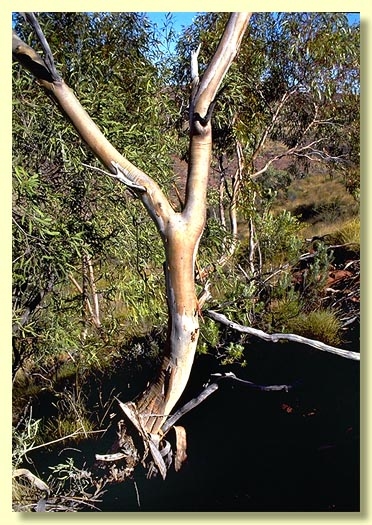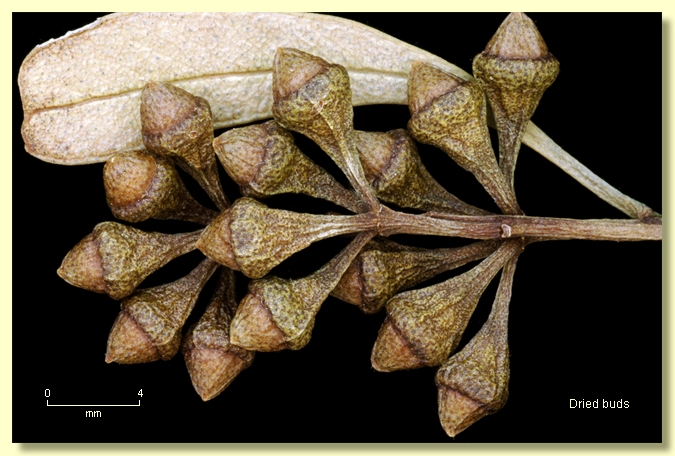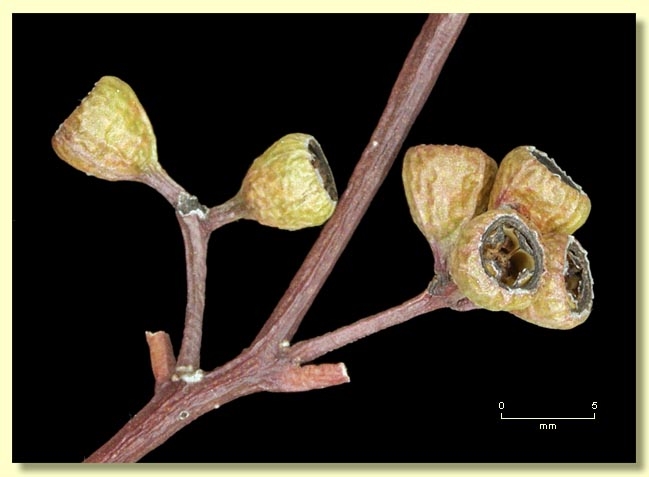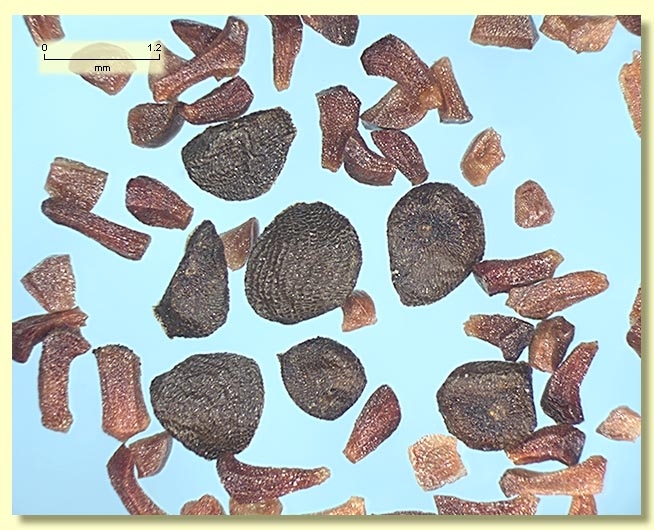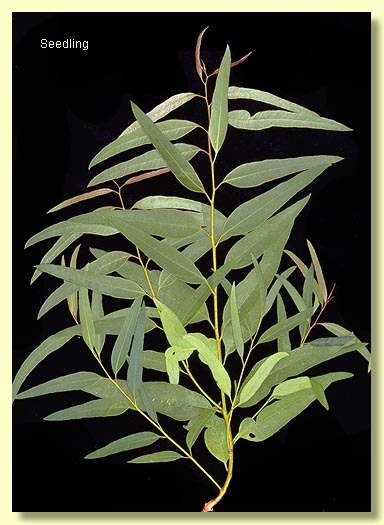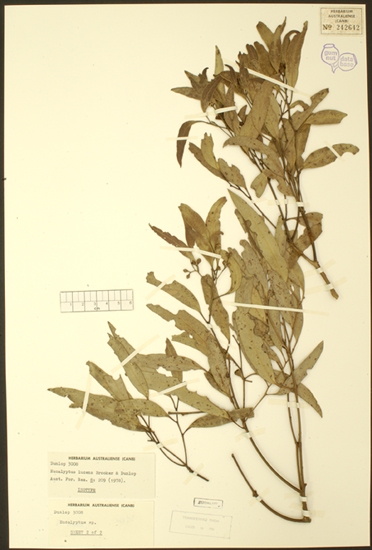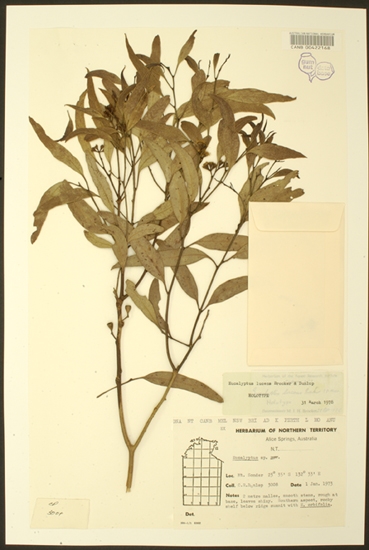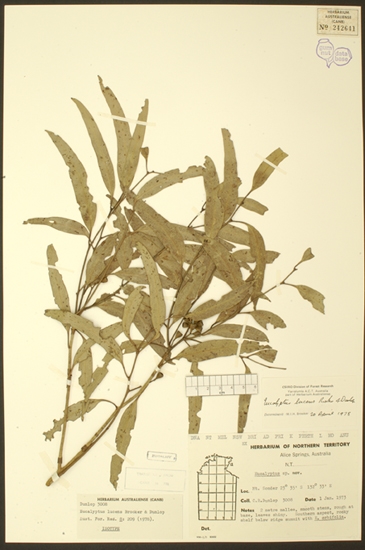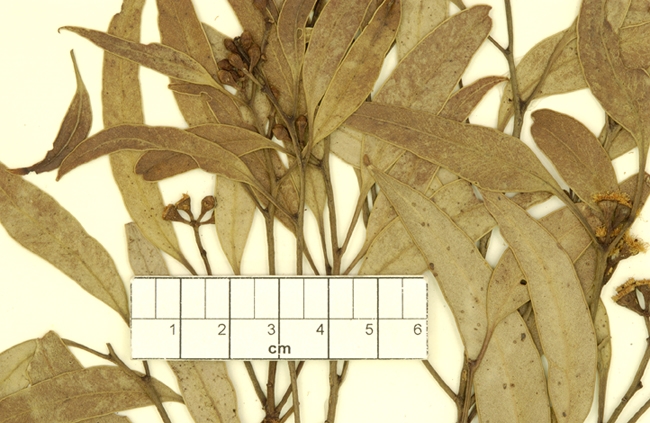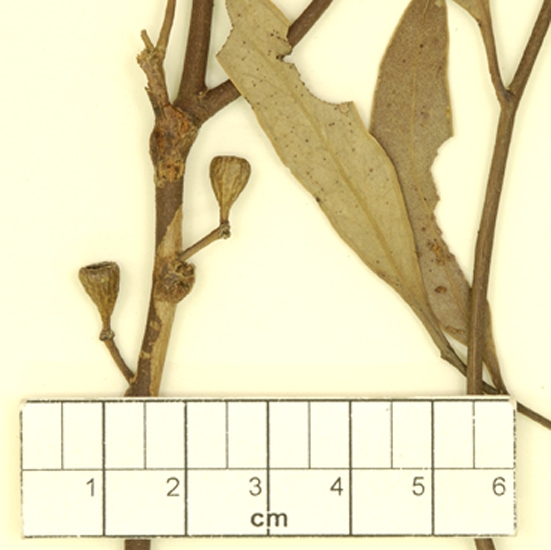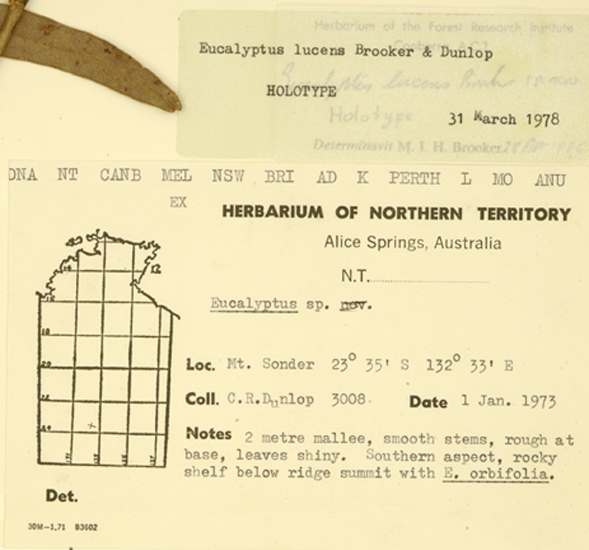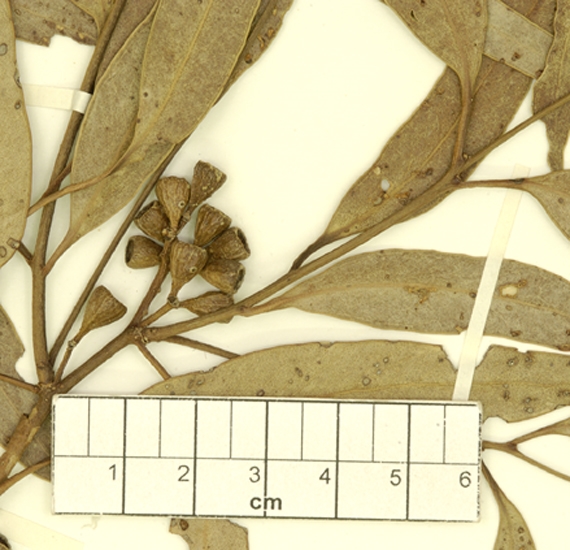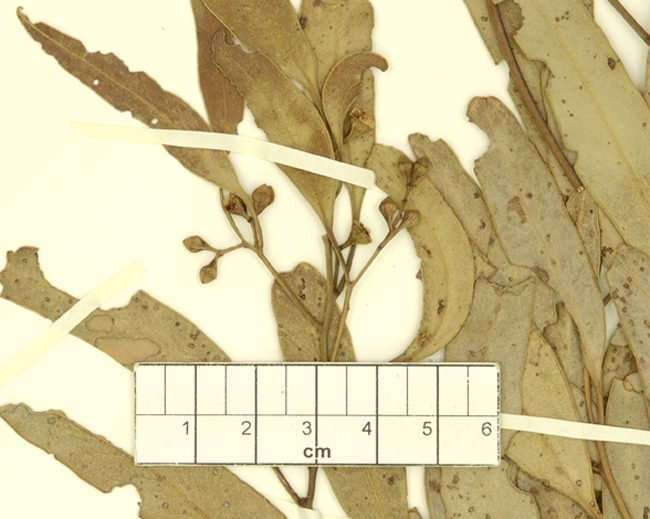Eucalyptus | Symphyomyrtus | Adnataria | Terminales | Heterophloiae
Euclid - Online edition
Eucalyptus lucens
Mallee to 5 m tall, but often smaller. Forming a lignotuber.
Bark wholly smooth or with a very short basal stocking of pale grey box-type bark. Smooth bark pale grey-white fading to pale brown, shedding in short strips.
Branchlets lack oil glands in the pith; non-glaucous.
Juvenile growth (coppice or field seedlings to 50 cm): stems square to rounded in cross-section; juvenile leaves always petiolate, alternate, lanceolate, 8–10 cm long, 1.5–2.5 cm wide, green.
Adult leaves alternate, petioles 0.5–2 cm long; blade lanceolate, 5.3–14 cm long, 0.8–2.1 cm wide, base tapering to petiole, margin entire, apex pointed, concolorous, very glossy, green, side-veins acute, reticulation dense, intramarginal vein present, oil glands scattered, mostly intersectional.
Inflorescence terminal compound, a few axillary single umbels sometimes present, peduncles slender, 0.3–1 cm long, buds 7(11) per umbel, pedicels 0.3–0.5 cm long. Mature buds ovoid to diamond-shaped, 0.4–0.5 cm long, 0.3–0.4 cm wide, scar present (outer operculum shed early), operculum conical and narrower than the hypanthium, stamens inflexed, the outer stamens lacking anthers (staminodes), some inner stamens with reduced, non-functional anthers, other stamens fertile, with the functional anthers adnate to and obliquely positioned on the filament tip, basifixed, cuboid, dehiscing by sub-terminal slits, style long and straight, stigma blunt, locules 4 or 5, the placentae each with 4 vertical ovule rows. Flowers white.
Fruit pedicellate (pedicels 0.1–0.5 cm long), obconical, 0.4–0.7 cm long, 0.4–0.6 cm wide, disc descending vertically but narrow and somewhat obscure, valves 4 or 5, enclosed or almost at rim level.
Seeds blackish brown, 1–2 mm long, flattened-ovoid, dorsal surface clearly shallowly reticulate, hilum ventral.
Cultivated seedlings (measured at ca node 10): cotyledons small, reniform; stems square in cross-section; leaves always petiolate, opposite for 4 to 7 nodes then becoming alternate, narrowly lanceolate, 6–12.5 cm long, 0.8–2.8 cm long, base tapering, apex pointed, dull, green,becoming glossy after ca node 10.
Flowering has been recorded in February, March and December.
A small mallee endemic to the Northern Territory and of restricted distribution in the arid ranges immediately west and south-west of Alice Springs, usually high on rocky slopes, e.g. Mt Sonder, Mt Hermannsberg. It is immediately recognizable in this area by its very glossy green crown of narrow leaves, obconical fruit and essentially pale smooth-barked stems.
Eucalyptus lucens belongs in Eucalyptus subgenus Symphyomyrtus section Adnataria because the buds have two opercula, ovules are in four rows, seeds are flattened-ovoid, cotyledons are reniform, and anthers are rigid on the staminal filaments. Within section Adnataria, E. lucens is part of series Heterophloiae having some basal box bark, terminal inflorescences, buds that shed the outer operculum early, stamens inflexed and the outer stamens sterile (staminodes). It is the only species in this series found in central Australia.
Eucalyptus lucens: Latin lucens, to shine, referring to the adult leaves.



